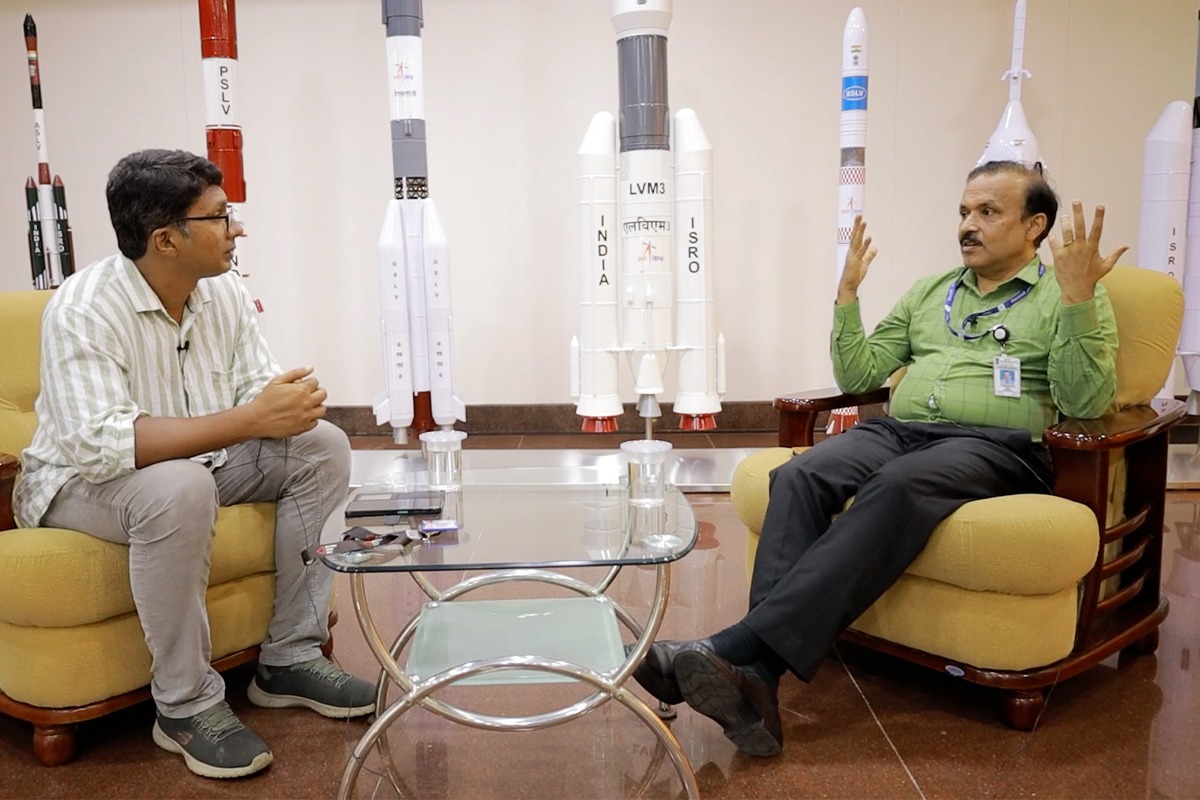

Indian scientists will start the tests for the country’s much-awaited first manned mission to the Moon, ‘Gaganyaan’, in the next two months, as per a top space scientist.

THIRUVANANTHAPURAM: Indian scientists will start the tests for the country’s much-awaited first manned mission to the Moon, ‘Gaganyaan’, in the next two months, as per a top space scientist.
In an interview with The New Indian, Vikram Sarabhai Space Centre (VSSC) director launch vehicle specialist Dr S Unnikrishnan Nair said the project will demonstrate human spaceflight capability by launching a three-member crew to an orbit of 400 km for a three-day mission.
“The test vehicle is ready. We will mount the escape system over it and take it to a certain altitude two months from now. This will be followed by an unmanned flight to test it again early next year”, Dr Unnikrishnan Nair said.
He spoke extensively on the significance and challenges of the space mission Gaganyaan and the ‘Human rating’ aspect of the mission.
ALSO READ: India’s Space Odyssey: VSSC Director Spills The Beans On Gaganyaan – India’s first manned mission
“It marks for the first time in India where it is embarking on a mission involving human spaceflight, where astronauts will be sent into space and brought back safely. This requires a different approach, with a primary focus on the safety and security of the crew. Special considerations are being made for their living environment, including provisions of food, water and waste management and maintaining the appropriate pressure”, Dr Nair said.
The director stated that the safety of the crew is of utmost importance in the Gaganyaan mission and revealed that the ‘Human rated’ approach involves flying on a shallow trajectory, even at the coat of payload, to ensure that the escape system is at the tip. He also added that the vehicle will be equipped with advanced avionics and a vehicle health management system to monitor vital parameters and make appropriate decisions in case of any issues during the mission depending upon the health conditions of the crew.
As per the ISRO, the project is accomplished through an optimal strategy by considering inhouse expertise, experience of Indian industry, intellectual capabilities of Indian academia & research institutions along with cutting edge technologies available with international agencies.
ALSO READ: SemiconIndia 2023 exhibition to showcase technological advancements
The prerequisites for Gaganyaan mission include development of many critical technologies including human rated launch vehicle for carrying crew safely to space, Life Support System to provide an earth like environment to crew in space, crew emergency escape provision and evolving crew management aspects for training, recovery and rehabilitation of crew.
Various precursor missions are planned for demonstrating the Technology Preparedness Levels before carrying out the actual Human Space Flight mission. These demonstrator missions include Integrated Air Drop Test (IADT), Pad Abort Test (PAT) and Test Vehicle (TV) flights. Safety and reliability of all systems will be proven in unmanned missions preceding manned missions.